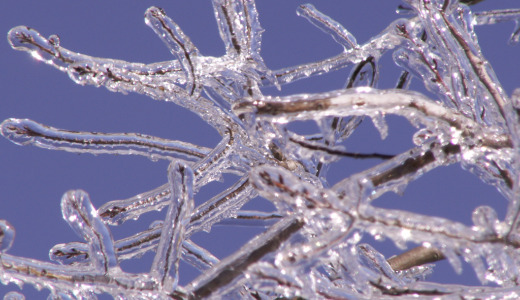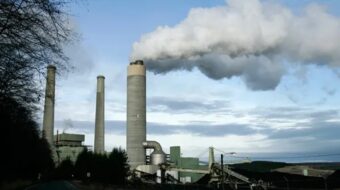
As winter weather hits us again, many people confuse the current weather (cold) with the long-term direction of the climate (warmer).
Just because it is cold outside right now doesn’t mean that global warming isn’t real. Global warming has to do with the climate, with the long-term trend of the world’s average temperature. The short-term weather has to do with what is happening this week or next in the part of the world where we currently reside. The two are not identical, and colder weather does not contradict the fact that our climate is warming up.
Another reason the two related but not identical issues are confusing is that global climate change is not uniform across the globe. Just because it is colder where you live doesn’t mean it isn’t warmer, relatively, elsewhere. In fact, global warming is taking place much more at the northern latitudes than in the continental U.S.
This is the reason why, even though the U.S. is experiencing more severe winter weather, the Arctic summer ice is covering less and less of the Arctic water, opening the fabled Northern Passage. It is still very cold at the North Pole, but it is relatively warmer. Average temperatures have already increased in the northern latitudes by almost 4 degrees Fahrenheit, much more than at temperate latitudes.
This is also one reason among many why global warming is so threatening. As temperatures warm more rapidly nearer both poles, two things happen which bode ill for the entire world.
First, ice, ice sheets and glaciers are melting rapidly, much more rapidly than even the most dire predictions of a few years ago. The glaciers on Greenland are melting more quickly, and also accelerating the speed at which they move towards the open seas. In the Antarctic, massive ice sheets are breaking off. Both these developments will cause a faster than predicted rise in the ocean level. Instead of happening over a thousand years, the complete melting of the Greenland glaciers is likely to take a few hundred years – and when they are completely melted that will increase sea levels by over 25 feet, inundating many coastal cities.
Second, as the northern latitudes warm more rapidly, more and more of the permafrost will melt, releasing both carbon dioxide and methane that have been frozen for millennia. This could result in runaway global warming, coming on top of the direct human release of greenhouse gases.
There are many more reasons to be concerned about global climate change, but just because it is cold outside is no reason at all to ignore the problem.
In a thoughtful article at HuffingtonPost, environmentalist Bill McKibben explains why climate change is a different kind of problem. He makes the essential point that what climate change skeptics are fighting is not other politicians or scientists; it’s physics.
In another good article, Bolivia’s ambassador to the United Nations explains the seriousness of even sharper cuts in emissions, and also his concept of “climate debt.”
Photo: http://www.flickr.com/photos/sis/ / CC BY 2.0











